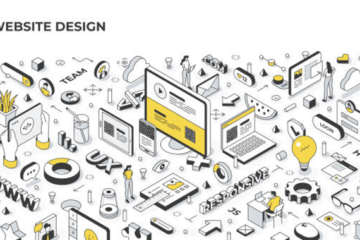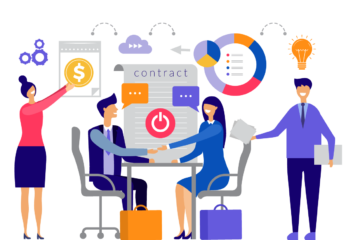The 10 Upcoming Web Design Trends
Following web design trends means staying ahead of the curve when it comes to the presentability and long-term strategy of your business. Regardless if you’re planning a new digital marketing strategy or just want to ensure the longevity of your business, this is one of the essential steps for you to get there. Here are the top 10 upcoming web design trends to show you exactly what we mean by this.
1. Retro font
There are several benefits of using a retro font. First of all, vintage typography can have a unique visual impression when combined with the right background. Second, it evokes a sense of nostalgia, especially for those who were here during the early days of the internet. Keep in mind that even though you’re using something traditional, there’s nothing wrong with giving it a modern spin.
2. Horizontal scrolling
Sure, vertical scrolling is the standard way of things, especially on mobile devices but there’s nothing wrong with breaking out of the ordinary in order to create something unique. You see, horizontal scrolling is common for the gallery style, which is great if this is the effect that you’re trying to produce. Keep in mind that if you want to put an emphasis on the text, vertical scrolling might still be a superior option.
3. Dark mode
The dark mode is quite popular for practical reasons. When reading on your phone late at night, bright colors might increase the harmful effect of glare on your vision. According to experts in web design from Sydney going for dark mode design means more than just switching the theme to a darker hue – it means figuring out the dark mode aesthetics and taking a completely different approach to the whole situation.
4. AR experience
Speaking of immersion, it doesn’t get any better than AR. Remember that AR technology requires only a smartphone (unlike VR technology that also requires a headset that the majority of people don’t have). If you’re trying to promote or sell an experience, providing a section with a high-tech solution like AR or hologram experience can make all the difference.
5. Parallax effect
The simplest way to describe the parallax effect is to say that it’s an optical illusion that creates the illusion of depth by using layers that move at different speeds. This can allow you to use animations that are not resource-intensive, thus making your design look more interactive. It also sends the message that you have invested more effort, time and resources in the development stage, which is already a huge plus.
6. Minimalism
Minimalism is always popular. It doesn’t require too many resources because its simplistic nature implies that there are fewer HTTP requests for the page to fully load. Second, it’s simple and sleek. The biggest misconception about minimalism is that just because it’s simple this means that it’s simple to pull off. Finding the right HTML-to-text ratio and using whitespace (regardless of its color) in the right way can be quite challenging.
7. Gaussian blur
One of the best ways to create an impression of luxury and elegance without investing in too high of a resolution is for you to go for a gaussian blur. The impression made this way is often atmospheric. Also, seeing as how shapes and images in the background are blurred, the text (and CTA) come first. This ensures that you direct the attention of your audience every step of the way and that there are no unnecessary distractions.
8. Multimedia experience
Multimedia experience is more immersive, more fun and more versatile as a design form. The problem, in the past, was the lack of infrastructure to support it. Nowadays, the majority of your visitors have access to the faster internet. Namely, with more and more people working remotely, amazing broadband is much more likely in an average household. This means that you could design your website in a more resource-heavy manner without compromising the user experience.
9. Scrolling effects
Keep in mind that scrolling is a huge part of the overall online browsing experience. A long, uninterrupted string of scrolling is a much more compelling experience than having to change the page every several seconds. Adding scrolling effects and different types of scrolling can be quite inspiring both for designers and visitors.
10. Oversize
Huge elements in your design can be quite useful in several ways. First of all, they make the layout more aesthetic through the use of contrast. Second, they are more effective at directing the attention of their audience. Finally, when displayed on small screen sizes (phones and some tablets) this way of sending a message is more effective.
In conclusion
Since you’re not going to redesign your website every couple of years, following the latest trends is not the biggest of your priorities. Still, examining why these trends are so big at the moment can change your perspective on web design as a whole. Every single one of the above-listed 10 trends has one or several advantages that you really shouldn’t ignore.














